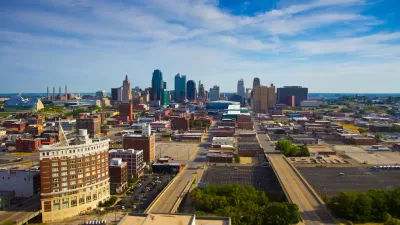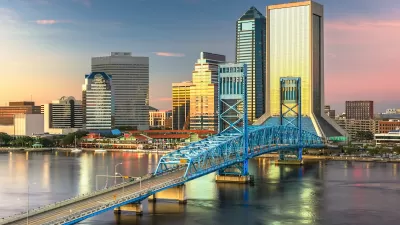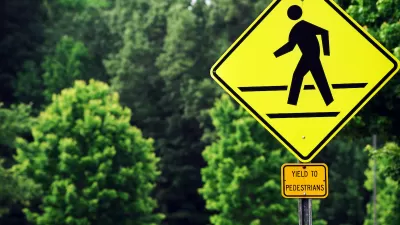The city aims to make its streets more walkable and reduce traffic violence by investing in sidewalks and other safety improvements.

Last month, Kansas City adopted a Vision Zero plan that pedestrian advocates hope will be a step toward making the city safer and more walkable. According to an article by Mili Mansaray for KCUR, “Residents complain about missing and poorly marked crosswalks and crumbling sidewalks.” The city’s walkability score, as defined by Walkscore.com, sits at 35 out of 100.
“We as a city, like most American cities, rely on design standards and other rules that do not prioritize pedestrians and other vulnerable road users,” said Michael Kelley, the policy director of BikeWalkKC. And, like other cities, Kansas City has seen a sharp rise in pedestrian deaths in the last decade, with communities of color disproportionately affected by traffic violence. “Smart Growth America reports that older adults were also struck and killed at much higher rates than other populations in 2020.”
Now, the city plans to implement more safety improvements and prioritize the communities that need them most through an $900 million infrastructure plan approved by voters in 2017, Go KC. “Through the Go KC bond program, the city will spend $7.5 million on sidewalks every year. Of that, $5.5 million will be used for sidewalks, and $2 million will be used on improvements to make streets safer for people with disabilities, such as curb ramps and colorful sidewalk bumps.”
Advocates are calling on the city to update its 2003 Walkability Plan and devote more resources to prioritizing pedestrians and other non-driving modes on the city’s roads and reconnecting communities cut off from resources by urban renewal projects.
FULL STORY: Can Kansas City park its cars and become more walkable?

Maui's Vacation Rental Debate Turns Ugly
Verbal attacks, misinformation campaigns and fistfights plague a high-stakes debate to convert thousands of vacation rentals into long-term housing.

Planetizen Federal Action Tracker
A weekly monitor of how Trump’s orders and actions are impacting planners and planning in America.

In Urban Planning, AI Prompting Could be the New Design Thinking
Creativity has long been key to great urban design. What if we see AI as our new creative partner?

King County Supportive Housing Program Offers Hope for Unhoused Residents
The county is taking a ‘Housing First’ approach that prioritizes getting people into housing, then offering wraparound supportive services.

Researchers Use AI to Get Clearer Picture of US Housing
Analysts are using artificial intelligence to supercharge their research by allowing them to comb through data faster. Though these AI tools can be error prone, they save time and housing researchers are optimistic about the future.

Making Shared Micromobility More Inclusive
Cities and shared mobility system operators can do more to include people with disabilities in planning and operations, per a new report.
Urban Design for Planners 1: Software Tools
This six-course series explores essential urban design concepts using open source software and equips planners with the tools they need to participate fully in the urban design process.
Planning for Universal Design
Learn the tools for implementing Universal Design in planning regulations.
planning NEXT
Appalachian Highlands Housing Partners
Mpact (founded as Rail~Volution)
City of Camden Redevelopment Agency
City of Astoria
City of Portland
City of Laramie





























